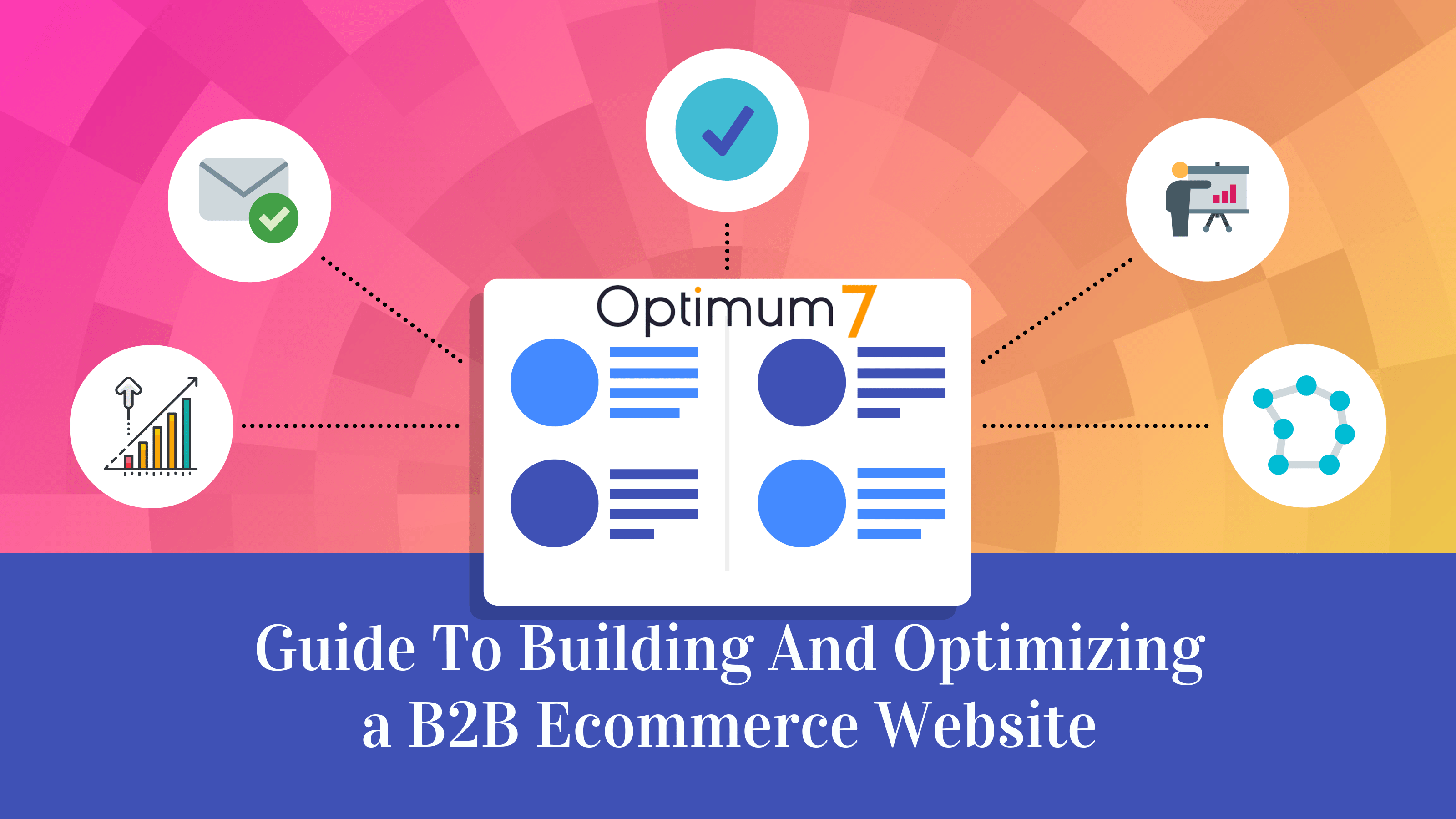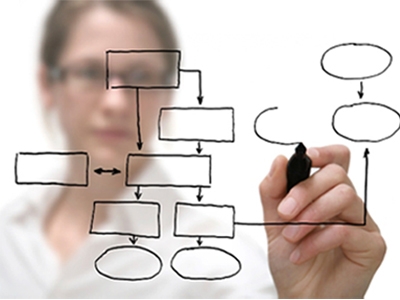 Over the past few weeks, I’ve been writing quite a bit on updating processes and streamlining the way marketing agencies should handle their clients. Typically, marketing firms work by department – design, copywriting, marketing, social media, etc. There is absolutely no problem with each department working independently. I’m a strong believer in working with a team of specialists, rather than a single person who “seems” to know everything. I’ve actually wrote extensively on that subject in this article. But as I mentioned in that post, these specialists need to come together and work as a team during the marketing process.
Over the past few weeks, I’ve been writing quite a bit on updating processes and streamlining the way marketing agencies should handle their clients. Typically, marketing firms work by department – design, copywriting, marketing, social media, etc. There is absolutely no problem with each department working independently. I’m a strong believer in working with a team of specialists, rather than a single person who “seems” to know everything. I’ve actually wrote extensively on that subject in this article. But as I mentioned in that post, these specialists need to come together and work as a team during the marketing process.
Enter The Questionnaire
In another recent post, I discussed revamping the processes here at Optimum7, specifically our New Client Strategy. The New Client Strategy involves a much more central, team-oriented approach to new clients. The backbone of this strategy is our overhauled client questionnaire, which was created and developed by Lucia Sastre, Lisa Sherman, Jani Seneviratne, and myself. Please note that I’m mentioning them here because this was a huge project of which they were each an essential part.
Since we began using this process, we have sent the questionnaire to several new clients. Thus far, all questionnaires have been completed clearly, thoughtfully, and on time. Of course, I am not foolish enough to think that this is enough data to make any kind of ruling on the new processes. However, when speaking with various members of the team, it seems to be helping out a great deal.
Tracking The Questionnaires
I’ve mentioned time and again that I am the type of person who doesn’t like to settle for simply “completing a task.” I do like to complete tasks, but I also like to measure their effectiveness, secure feedback from users, and simplify the process as much as possible, in order to get a better result.
Revamping the processes here at Optimum7 is no exception. To ensure that this particular process was accurately tracked, I created a spreadsheet in Google Drive titled “Getting To Know You Tracking,” which has been shared with the entire Optimum7 team. On this spreadsheet, I’ve created columns for the following data:
- Name of the client/company
- Main contact person
- Optimum7 employee who sent the form
- The date the form was sent
- The date the form was returned completed
- The initial link to the thread on our project management system
- The link where the completed questionnaire is located
- Notes
Arguably, the most important aspect of this spreadsheet is the “notes” section. In it, Optimum7 employees are to discuss the client’s reaction to the questionnaire. The employees should indicate if the answers were thorough, complete, clear, etc. and if the questionnaire was returned in a timely manner. We can also add notes about the client’s overall attitude towards the questionnaire. Finally, this section can be used to discuss issues with the questionnaire itself. An example of a good note would be something like the following:
“Johnny Appleseed did a great job! He got the questionnaire back a day early, and his answers were thorough and clear. He seems to care about his business a great deal, and is open to creative ideas and working with us to create the most successful campaign possible! The only issue that I found was in the demographics section. We may need to restructure/clarify here; he seemed a bit confused on where to put his answers. Keep this in mind for when we revisit the process in 3 months!”
This note mentions that we will be revisiting the process in 3 months. When we began using this process, I immediately set a reminder to review the New Client Strategy 90 days in the future. On that date, I plan to print out the Getting To Know You Tracking spreadsheet, meet with the team, and make any edits we feel are necessary.
Editing The Process Further
The New Client Strategy doesn’t end with the questionnaire. On the contrary, it is only the beginning! The full strategy looks something like this:
The New Client Strategy
Step 1: The Team is notified that we have acquired a new client.
Step 2: The new client receives access to our Project Management System, along with a welcome email.
Step 3: An execution schedule is sent to the client.
Step 4: The Getting to Know You Questionnaire is sent to the client, with detailed instructions on how to fill it out and a deadline for completion. At this point, we also explain to the client why filling out this form to the best of their ability is important.
Step 5: The client takes 7 business days to review and complete the form (it is very comprehensive), during which time we follow up 2-3 times.
Step 6: We receive the form back from the client, at which point we are sure to confirm that we have received the form and thank them for their time.
Step 7: All contact information from the form is updated in the necessary databases.
Step 8: The information on the Getting To Know You Tracking spreadsheet is updated, complete with notes on the clients’ reaction/attitude/feedback.
Step 9: The form is posted on our internal system, and a brief meeting for the following day is scheduled. All team members must review the questionnaire prior to the meeting, and come prepared with any questions or concerns they may have regarding the new client.
Step 10: The following day, the entire team meets for 15 minutes to discuss the new client and the services we will be providing them. During this meeting, all team members discuss any questions or concerns. From this discussion, I create a list of any questions to pass along to the client. I send these questions to the client immediately after the meeting.
Step 11: When this list of questions/concerns has been completed, the majority of the team is excused. For another 15 minutes, the account manager, a designer, and a copywriter remain to discuss the sitemap, unique value propositions, calls to action, and goals. Again, I take notes of all of this. When we have finished compiling this information, it is sent to the client along with the questions I mentioned it step 10.
Step 12: The meeting is adjourned, and all team members begin working on the necessary tasks to get the project finished.
Why Bother?
I know what you’re thinking. “Bridget, 12 steps? Is that really necessary? I mean, this isn’t rocket science!”
Okay. If the above statement was your reaction to my process, we need to have a little chat. There is something you need to understand about me. You see, I’m the type of person who does almost nothing without purpose. It may be the designer in me taking over my entire life, but that’s the way it is. It could be because throughout college, my professors were constantly demanding answers to every design decision I made. Why this color? Why this typeface? What is the meaning behind this symbol? And so this thought process has seeped into nearly every aspect of my life. Although it makes for a somewhat structured personal life, it also makes for very organized, problem solving work habits.
To help you understand my New Client Strategy a bit better, I am going to break down each step and discuss my reasoning.
Ladies and gentlemen, are you ready for a little trip inside my brain? I certainly hope you’re wearing your life-jackets! Hehe.
Fasten Your Seatbelts
Step 1: The Team is notified that we have acquired a new client.
This step is somewhat self-explanatory. But it is necessary nonetheless. Typically, me or an account manager is notified of a new client, and puts the process into motion.
Step 2: The new client receives access to our Project Management System, along with a welcome email.
Here at Optimum7, we use a project management system to keep all documents, information, and client communication in a single place.
Step 3: An execution schedule is sent to the client.
This execution schedule includes a list of tasks and their estimated completion dates. This establishes a level of expectations for the client, and helps Optimum7 stay on top of their deadlines.
Step 4: The Getting to Know You Questionnaire is sent to the client, with detailed instructions on how to fill it out and a deadline for completion. At this point, we also explain to the client why filling out this form to the best of their ability is important.
I’ve written about how important client involvement is in today’s marketing world. For any marketing strategy to work, I truly believe that the job must be divided between the consultant and the client.
Step 5: The client takes 7 business days to review and complete the form, during which time we follow up 2-3 times.
It is important to give the client ample time here. Of course we would like the information back as soon as possible, but the important thing is really to take the time to do things right the first time. By following up throughout the week, we can ensure that the client is staying on deadline, and answer any questions they may have.
Step 6: We receive the form back from the client, at which point we are sure to confirm that we have received the form and thank them for their time.
It is important to make sure the client knows that we understand their time is valuable. We truly appreciate their assistance in our research process, and need to make sure they understand that. In addition, by establishing respect for our clients’ time, we often find the favor returned.
Step 7: All contact information from the form is updated in the necessary databases.
There is truly something to be said for having all important information in one place. It is human nature to want information in a central location. This is one of the reasons that we use calendars, address books, file folders, etc. By storing this information in the same place, we cut down on time and frustration.
Step 8: The information on the Getting To Know You Tracking spreadsheet is updated, complete with notes on the clients’ reaction/attitude/feedback.
I discussed this earlier in the “Tracking The Questionnaires” section above.
Step 9: The form is posted on our internal system, and a brief meeting for the following day is scheduled. All team members must review the questionnaire prior to the meeting, and come prepared with any questions or concerns they may have on the new client.
By giving all team members advanced notice and easy access to this information, there is absolutely no reason for anyone to come unprepared.
Step 10: The following day, the entire team meets for 15 minutes to discuss the new client and the services we will be providing them. During this meeting, all team members discuss any questions or concerns. From this discussion, I create a list of any questions to pass along to the client. I send these questions to the client immediately after the meeting has finished.
This initial meeting is crucial. It is so important that every member of the team is aware of our new clients, and understands how they will play a role in a project. Even if they haven’t initially been assigned to the project, this meeting gives each team member a chance to ask questions, bring creative ideas to the table, and make observations about obstacles we may face along the way. I have done my best to keep the meetings as brief as possible so minimal time is wasted.
Step 11: When this list of questions/concerns has been completed, the majority of the team is dismissed. For another 15 minutes, the account manager, a designer, and a copywriter remain to discuss the sitemap, unique value propositions, calls to action, and goals. Again, I take notes of all of this. When we have finished compiling this information, it is sent to the client along with the questions I mentioned it step 10.
My goal here is not to waste anyone’s time. Once everyone has been briefed on the new client and all concerns have been addressed, it is appropriate to dismiss most team members. The following 15 minutes with the small group allow marketing, content and design departments meet to create the most efficient strategy possible.
Step 12: The meeting is adjourned, and all team members begin working on the necessary tasks to get the project finished. A list of questions/concerns is sent to the client for review, along with the proposed sitemap and strategy.
Once again, client communication is the key. It is crucial that our clients understand how we work, and why we make the decisions we make. By keeping them in the loop from the very beginning, we establish trust and authority.
The Takeaway
The point of the New Client Strategy is to make sure that every single member of the team understands the next step in the project. Nothing is left to the imagination. All questions are answered. Any possible holes are found and patched. This is the way we need to work. As a small business, we simply don’t have the time or resources to do everything twice. Especially when most problems can be solved in this initial 30 minute meeting.
Are you looking for a marketing company that works with purpose? Contact Optimum7 today for a free consultation.





